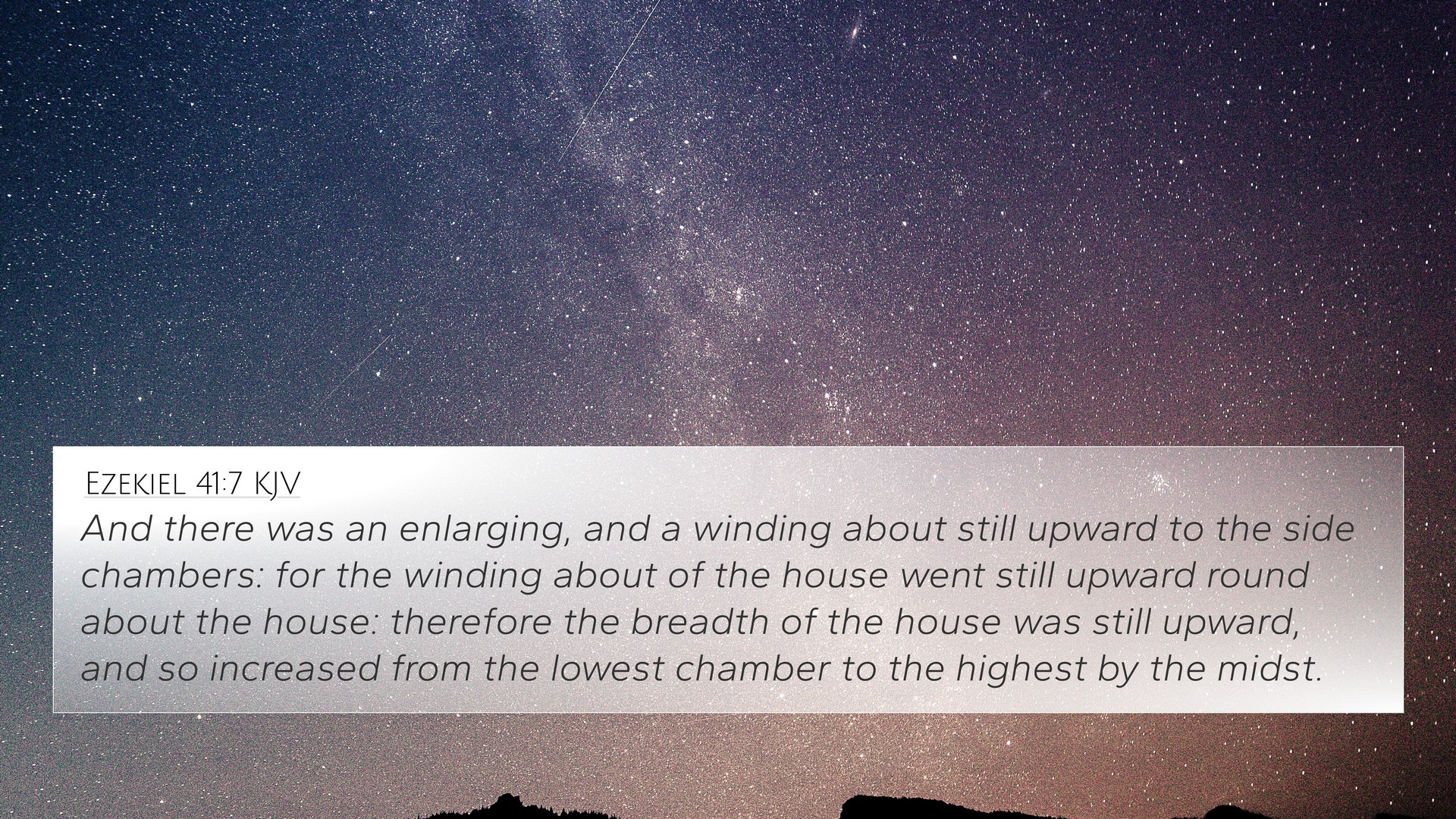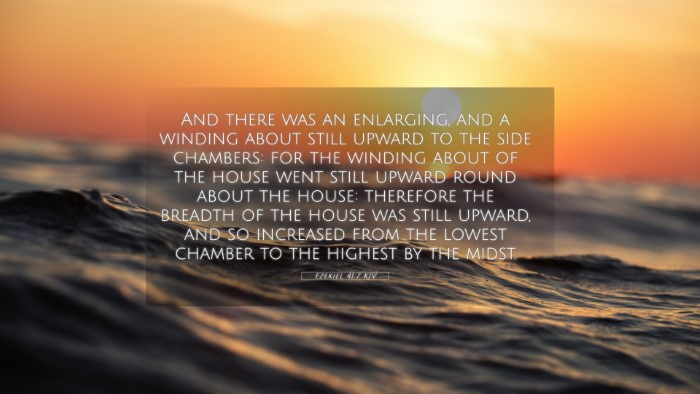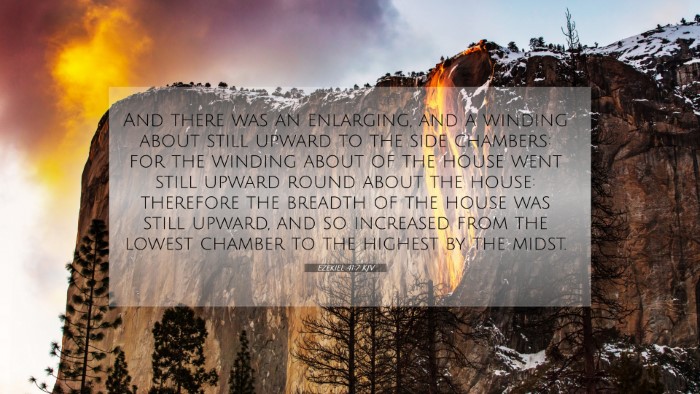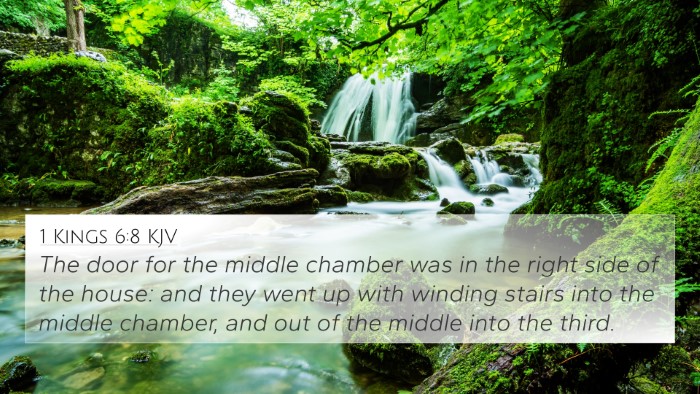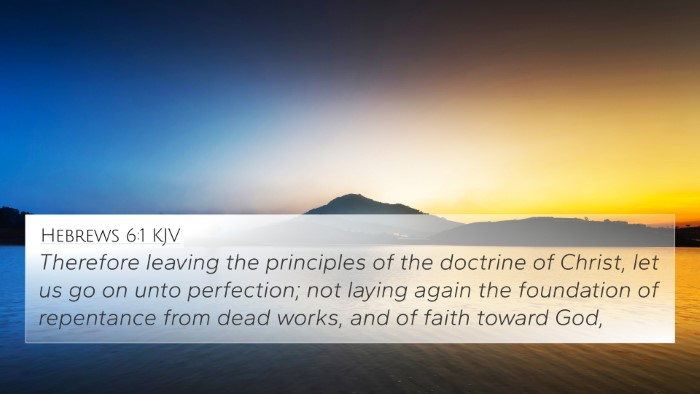Ezekiel 41:7 Interpretation
Ezekiel 41:7 states: "And the thickness of the wall, which was by the side of the chambers, was five cubits: and that which was left is the place of the chambers that were in the temple."
This verse provides insights into the architectural design of the temple as described by the prophet Ezekiel.
It signifies the intricacy of the temple's structure and emphasizes the meticulous nature of divine specifications concerning the place of worship.
Meaning of Ezekiel 41:7
The text serves to convey the significance of the temple's design, which is not merely functional but also holds spiritual implications.
It reflects God's desire for His dwelling place to be both organized and sacred. The careful measurements symbolize order in worship and the importance of approaching God with reverence.
Insights from Commentaries
-
Matthew Henry:
Matthew Henry emphasizes the precision in the temple's construction as a representation of God's majestic presence.
He indicates that the walls and chambers serve as a metaphor for God's protection over His people and the sanctity of His house.
-
Albert Barnes:
Albert Barnes notes that the measurements provide a physical and spiritual foundation for understanding the temple's role in Israel's worship.
He highlights the importance of the divisions and spaces in the temple as means to facilitate sacred activities.
-
Adam Clarke:
Adam Clarke points out the significance of the wall thickness, suggesting that it symbolizes strength and safety for the worshippers.
He interprets the architectural details as God's providential care for His people, reinforcing their identity as a holy nation.
Bible Verse Cross References
This verse can be understood in relation to various other scriptures that provide additional context or thematic connections.
Here are some relevant cross-references:
-
2 Chronicles 3:3: Details the foundation of Solomon's temple and helps to compare with Ezekiel's measurements.
-
1 Kings 6:20: Discusses the inner sanctum of the temple which can be paralleled with the chambers Ezekiel describes.
-
Isaiah 66:1: Emphasizes the greatness of God’s dwelling place and relates to the holiness of the temple.
-
Revelation 21:22: The New Jerusalem imagery connects with the heavenly design of God's presence among His people.
-
Hebrews 9:24: Reference to the heavenly sanctuary which informs the understanding of the temple’s purpose.
-
Exodus 25:8: God's directive for a sanctuary, illustrating His desire to dwell among His people.
-
Psalm 84:1-2: Expresses yearning for God's dwelling, relating to the sacred spaces of the temple.
Thematic Bible Verse Connections
The themes of divine presence, holiness, and worship are central to Ezekiel 41:7.
The emphasis on structural design relates to the larger biblical theme of God desiring to dwell among humanity, as seen throughout both the Old and New Testaments.
These connections illustrate the continuity of God’s relationship with His people.
Using Bible Cross-References
Engaging with cross-references is essential for deeper biblical understanding.
Resources such as a Bible concordance or a Bible cross-reference guide can facilitate studies by helping individuals identify connections between verses, such as:
-
How to find cross-references in the Bible: Look for keywords or themes in the text and use a concordance to find related verses.
-
Cross-referencing Bible study methods: Employ thematic studies or verse mapping to explore relationships between scriptures.
-
Bible cross-reference system: Utilizing printed or digital resources to trace patterns and themes through verses.
Conclusion
Ezekiel 41:7 offers profound insights into the nature of God's dwelling and the importance of worship.
By utilizing cross-referencing resources, one can uncover deeper meanings and connections, enhancing the study of scripture.
The intricate details of the temple illustrate God's plan and holiness, inviting believers to engage with Him in a structured and reverent manner.
